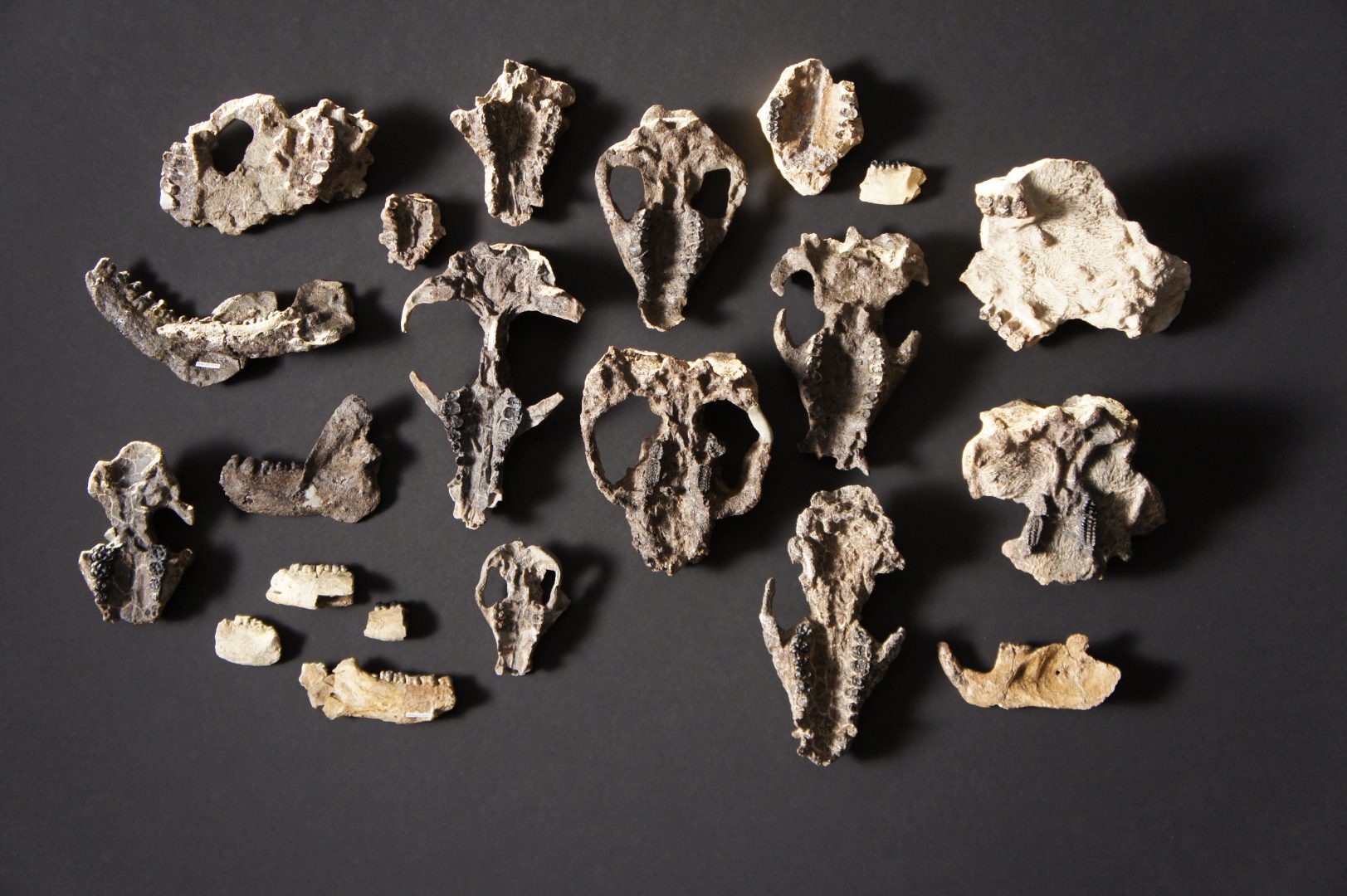
An overhead shot of the prepared mammal skull fossils and lower jaw retrieved from Corral Bluffs
HHMI Tangled Bank Studios

An overhead shot of the prepared mammal skull fossils and lower jaw retrieved from Corral Bluffs
HHMI Tangled Bank Studios

HHMI Tangled Bank Studios
An overhead shot of the prepared mammal skull fossils and lower jaw retrieved from Corral Bluffs
Sixty-six million years ago, an asteroid slammed into Earth, bringing the dinosaurs’ reign to a fiery end. But from this catastrophe, tiny mammal survivors were able to emerge from the shadows and flourish.
Today we live in the age of mammals, with a staggering array of species, from lions to bats to whales, occupying nearly every habitat on Earth. But how did our predecessors evolve so rapidly and diversify into the range of creatures we know today?
An astonishing new trove of fossils is finally providing some answers. NOVA takes you to Colorado, where fossils hidden inside ordinary-looking rocks provide a dramatic picture of how life rebounded in the first million years after the asteroid impact.
They show how plants and animals evolved together, and how rat-sized mammals—safe from dinosaurs’ jaws—ballooned in size at an astounding rate.
What the fossils tell us may transform our understanding of our fellow mammals—and how life can recover after a mass extinction.
Join us for a new episode of NOVA on WITF TV Wednesday October 30 at 9:00pm. This episode of NOVA is also available for streaming via the PBS Video app.
The days of journalism’s one-way street of simply producing stories for the public have long been over. Now, it’s time to find better ways to interact with you and ensure we meet your high standards of what a credible media organization should be.